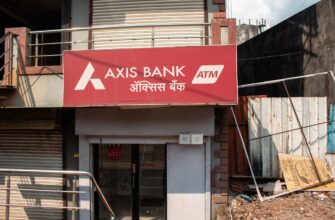🔐 USDT Mixer — Total Privacy for Your Crypto
Experience fast and secure USDT TRC20 mixing. 🌀
No accounts. No records. Just full anonymity, 24/7. ✅
Service fees start at only 0.5%.
## Introduction
Encrypting your private key with a password is essential for protecting sensitive data like cryptocurrency wallets, SSH access, and digital certificates. An unencrypted private key is like leaving your house keys in the door—anyone can use it. This 900-word guide provides a detailed, step-by-step walkthrough using OpenSSL (the industry-standard tool), plus critical security best practices. Whether you’re a developer or security-conscious user, you’ll learn to add a vital layer of protection in minutes.
## Why Password-Protect Your Private Key?
Private keys grant access to encrypted communications, blockchain assets, and secure servers. If stolen or leaked without encryption:
– Attackers can impersonate you or steal funds
– Sensitive data becomes vulnerable
– Compliance requirements (like HIPAA or GDPR) may be violated
Encryption scrambles your key using AES-256 or similar algorithms, requiring your password to unlock it. This creates two-factor security: possession of the file + knowledge of the passphrase.
## Step-by-Step: Encrypting a Private Key with OpenSSL
Follow these steps precisely using OpenSSL (pre-installed on Linux/macOS; download for Windows):
1. **Open Terminal/Command Prompt**
Launch your system’s command line interface.
2. **Generate or Locate Your Private Key**
If creating a new key:
`openssl genpkey -algorithm RSA -out private.key`
For existing keys, note the file path (e.g., `~/mykey.pem`).
3. **Encrypt the Key with a Password**
Run:
`openssl pkcs8 -topk8 -v2 aes-256-cbc -in private.key -out encrypted.key`
– `-v2 aes-256-cbc`: Uses military-grade AES-256 encryption
– You’ll be prompted to create & verify a password
4. **Verify the Encrypted Key**
Check output using:
`cat encrypted.key`
Content should start with `—–BEGIN ENCRYPTED PRIVATE KEY—–`.
5. **Test Decryption (Optional but Recommended)**
Validate with:
`openssl pkey -in encrypted.key`
Enter your password when prompted. If successful, the key details display.
6. **Delete the Original Unencrypted Key**
Securely wipe it using:
`shred -u private.key` (Linux) or cipher.exe /w:private.key (Windows).
## Alternative Encryption Tools
While OpenSSL is universal, other options include:
– **GnuPG (GPG)**: Ideal for email/File encryption. Command: `gpg –symmetric –cipher-algo AES256 private.key`
– **OpenSSH**: For SSH keys. Use `ssh-keygen -p -f ~/.ssh/id_rsa`
– **KeyStore Explorer**: GUI-based for Java keystores
– **Bitcoin Core Wallet**: Automatically encrypts wallet.dat private keys
## Critical Security Best Practices
– **Password Strength**: Use 12+ characters with upper/lowercase, numbers, and symbols. Avoid dictionary words.
– **Storage**: Keep encrypted keys offline on encrypted USB drives or hardware security modules (HSMs). Never store in cloud services unencrypted.
– **Backups**: Save encrypted copies in 2+ physical locations (e.g., external drive + fireproof safe).
– **Password Management**: Store passphrases in a password manager (like Bitwarden or KeePass), NOT in plaintext files.
– **Rotation**: Change passwords every 6-12 months and re-encrypt keys if compromised.
## Frequently Asked Questions (FAQ)
### Can I encrypt an existing private key without recreating it?
Yes! The OpenSSL `pkcs8` command in Step 3 works for existing keys. Just specify the input file path.
### What if I forget the encryption password?
Your key is irrecoverable. The encryption is designed to be unbreakable—backup passwords securely.
### Is AES-256 secure enough for cryptocurrencies?
Absolutely. AES-256 is used by governments and banks. Combined with a strong password, it’s currently uncrackable.
### Can I use this method for SSL/TLS certificates?
Definitely. Encrypt private keys for web servers (e.g., Apache/Nginx) to prevent unauthorized certificate use.
### How often should I update my encryption password?
Annually, or immediately after any suspected security incident. Regularly audit key access logs.
## Final Tips
Always test decryption after encrypting a key. For high-value assets (like Bitcoin wallets), consider multisig solutions or hardware wallets for added security. Remember: Encryption is only as strong as your password hygiene. Start protecting your keys today—it takes under 5 minutes but could prevent catastrophic breaches.
🔐 USDT Mixer — Total Privacy for Your Crypto
Experience fast and secure USDT TRC20 mixing. 🌀
No accounts. No records. Just full anonymity, 24/7. ✅
Service fees start at only 0.5%.








